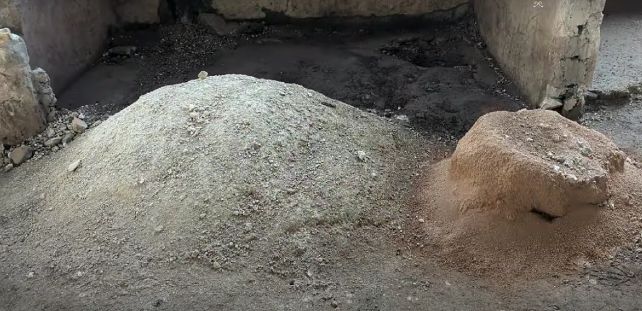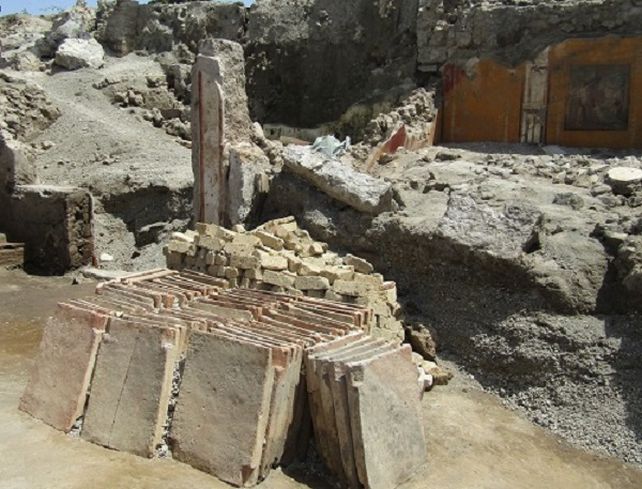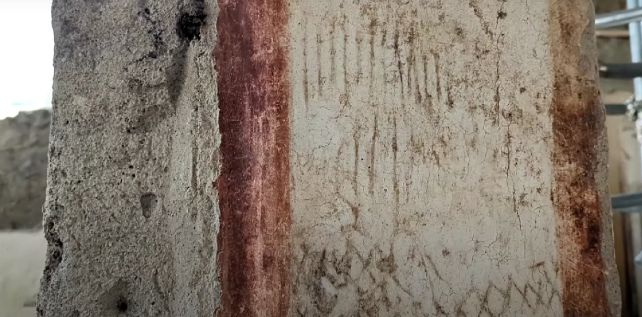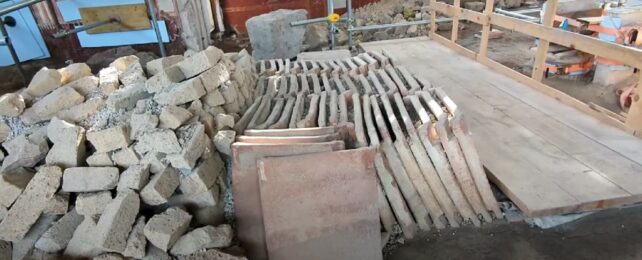Archaeologists have found an unusual treasure that has been buried for nearly 2,000 years under the ash and debris that rained down from the catastrophic eruption of Vesuvius, in 79 CE.
In the rooms of an ancient home, or domus, excavations have revealed a construction site, in perfect condition. That includes tools, unused tiles, bricks hewn from volcanic material called tuff, and the pièce de résistance – piles of lime to mix Ancient Roman concrete.
Home renovation may seem somewhat mundane, but the discovery gives us a pristine snapshot of how the Ancient Romans constructed the buildings in which they lived. And it also reveals some new information about the construction techniques that produced buildings that are still standing, thousands of years later.

"The excavation in Region IX, insula 10, planned during the years of the Great Pompeii Project is yielding, as was to be expected, important results for furthering our knowledge of the ancient city," says Massimo Osanna, Italy's Director General of Museums.
Excavation works in Region IX, a largely unexplored area, follow on from previous excavations of another, adjacent area, Region V, and were born out of the need to stabilize walls of eruptive material at the edge of excavation sites "that loom dangerously over the excavated areas," Osanna says.
Historians and scientists are fascinated by how ancient humans lived and innovated, but much of that information is lost to time. We have echoing ruins, objects and fragments of objects, bones and, if we're lucky, written records. But Pompeii is a whole other realm.
What happened to the people of Pompeii was a horrifying tragedy, but when scorching volcanic ash buried the city in 79 CE, it preserved it, a single moment in time frozen for millennia to come. Excavation work is painstaking and ongoing, but it's gradually revealing the minutiae of the day-to-day lives of the city's inhabitants.

The construction site was unveiled in a house whose ongoing excavation had previously revealed it belonged to a baker, with a large oven.
An artwork depicting flatbread and a glass of wine, as well as electoral manifestos revealing support for a politician named Aulus Rustius Verus, have also been found in the house. And three Pompeii victims – two women and a boy – were found not far from the oven.
As they worked further on the house, archaeologists started to uncover evidence of construction. The partially covered atrium contained piles of building materials, and marks on the jamb of the door leading to the tablinum, or reception room, were probably tally marks to keep track of the building site accounts.
In the lararium, in which the household shrine is kept, the researchers found amphorae, clay vessels they believe were used to mix plaster to finish the walls. And construction tools found in several rooms included plumb-bobs – lead weights on a string, used to make sure vertical lines were straight – and hoes used to stir concrete.

Finally, the discovery seems to confirm the method of mixing Roman concrete discovered only last year. Previously, it had been thought that the lime was mixed with water prior to being added to dry sand known as pozzolana to make concrete.
Through analysis and experimentation, scientists found that this is not necessarily the case: Rather, dry lime and dry pozzolana are mixed together with hot water at very high temperatures to produce a very durable, fast-setting, and self-healing concrete.
The materials found at the newly uncovered construction site confirm this method, the archaeologists say.
"It is yet another example of how the small city of Pompeii makes us understand so many things about the great Roman Empire, not least the use of cement," says Archaeological Park of Pompeii Director Gabriel Zuchtriegel.
"The data emerging seems to point to the use of quicklime in the construction phase of the walls, a practice already hypothesized in the past and capable of considerably speeding up the time of a new construction, but also of the renovation of buildings damaged, for example, by an earthquake."
The rediscovery of these construction techniques, lost for so many years, could also yield innovations for engineers today, the researchers add, in repairing damaged buildings or reusing materials.
